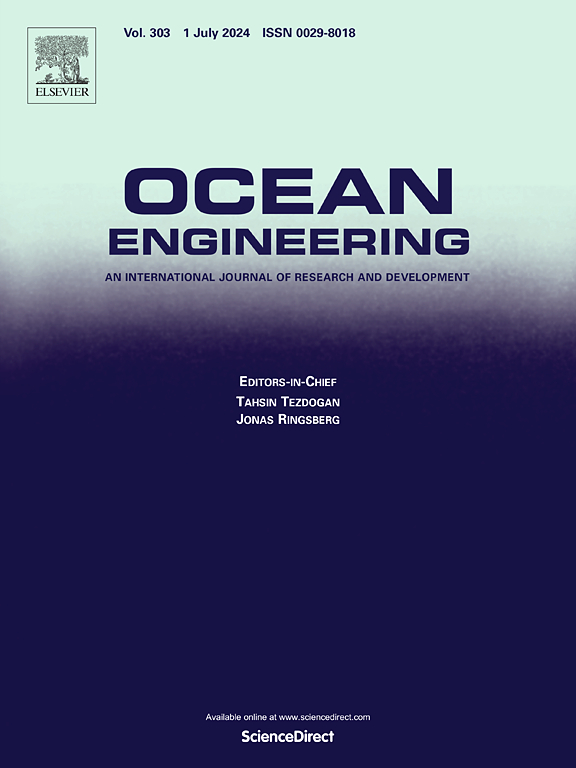Steady streaming in front of Jarlan-type perforated caisson breakwaters
IF 4.6
2区 工程技术
Q1 ENGINEERING, CIVIL
引用次数: 0
Abstract
This study numerically explores the impact of perforated walls on the steady streaming formation in front of Jarlan-type perforated caisson breakwaters (JTCBs). A two-dimensional VOF-RANS hydrodynamic model with the RNG turbulence closure was developed to simulate turbulence field near the caisson breakwaters. The model incorporated a specific wall geometry with horizontal slots to accurately represent a porosity of e = 20 %, for maximizing wave energy dissipation. The model predictions were validated against experimental data and analytical solutions for standing waves, showing excellent agreement. Key findings indicated that the steady streaming pattern in front of JTCBs is significantly altered from that of the vertical breakwaters. Specifically, the turbulence field near the perforated wall and destructive interference of reflected waves from the perforated and rear walls substantially modify the steady streaming pattern. A reduction in the reflection coefficient was associated with decreased steady streaming intensity indicated by smaller and fewer recirculating cells. Quantitatively, the JTCBs with B/L = 0.21 and 0.12 reduced the maximum near-bed horizontal velocity at the second wave node by approximately 48 % and 31 % respectively, relative to vertical breakwaters. These reductions suggest a distinct scour/deposition pattern in front of JTCBs and highlighting their potential advantages in coastal protection applications.

求助全文
约1分钟内获得全文
求助全文
来源期刊

Ocean Engineering
工程技术-工程:大洋
CiteScore
7.30
自引率
34.00%
发文量
2379
审稿时长
8.1 months
期刊介绍:
Ocean Engineering provides a medium for the publication of original research and development work in the field of ocean engineering. Ocean Engineering seeks papers in the following topics.
 求助内容:
求助内容: 应助结果提醒方式:
应助结果提醒方式:


